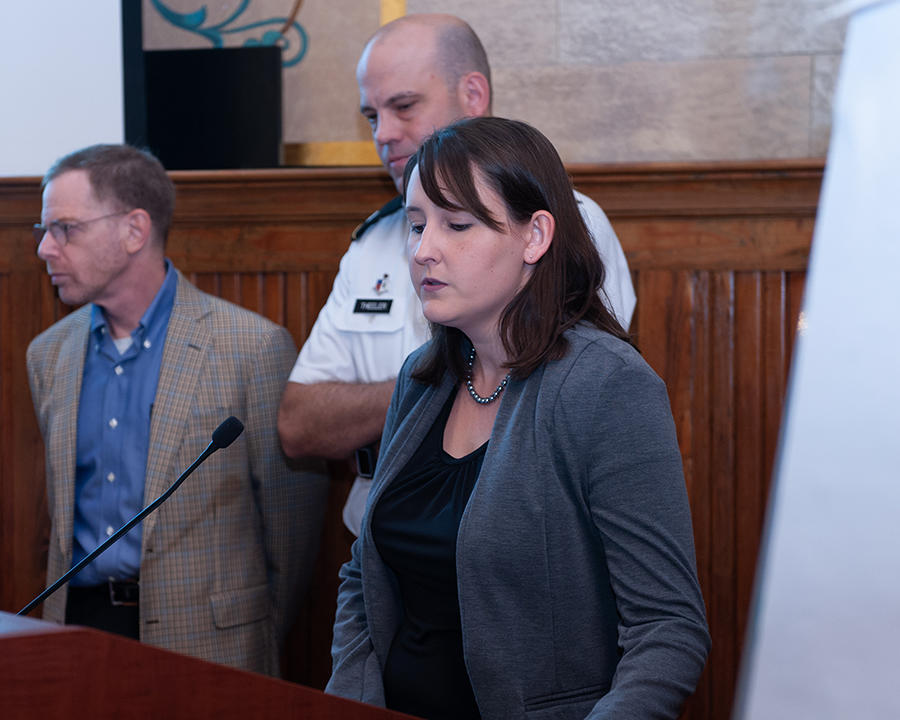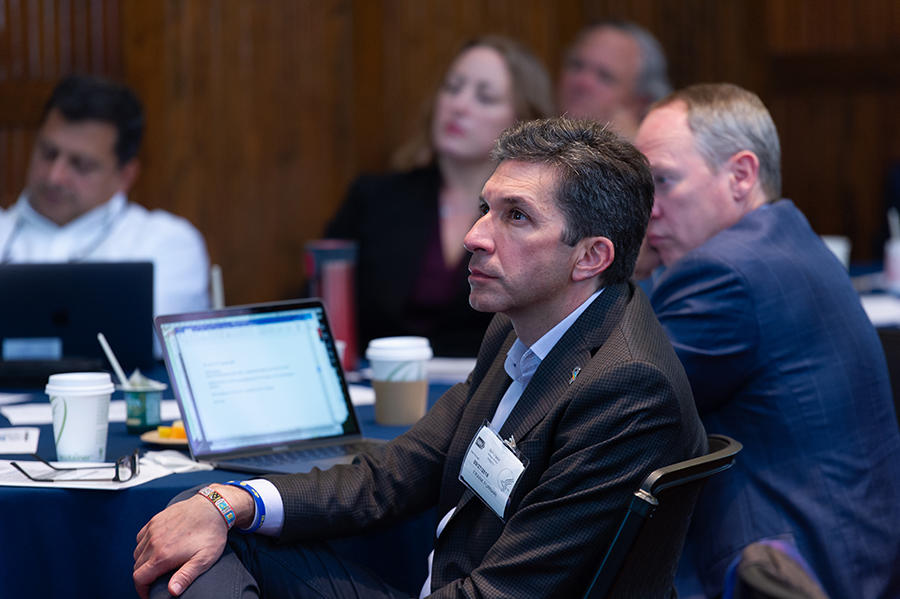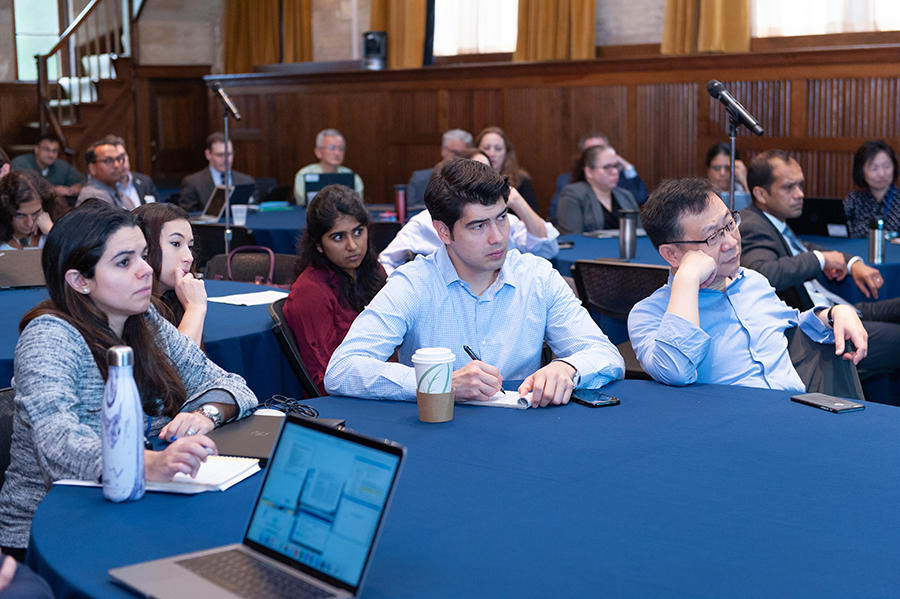2018 Histone Mutated Midline Glioma Workshop Report
, by Kristin Odom, NCI-CONNECT Communications Editor
The NCI-CONNECT Histone Mutated Midline Glioma Workshop was held at NIH on September 27, 2018. Neuro-oncology experts from around the world met to discuss the scientific progress and challenges of histone mutated midline glioma management and find ways to collaborate to advance research and treatments. The workshop concluded with recommendations and an action plan that was published in a proceedings paper in Neuro-Oncology Advances.
The workshop was co-led by Yamini Dalal, M.D., of NCI’s Center for Cancer Research (CCR) Laboratory of Receptor Biology and Gene Expression, and Brett Theeler, M.D., of Walter Reed National Military Medical Center and CCR's Neuro-Oncology Branch.
“This meeting brought together experts from basic and translational sciences, pediatric and adult neuro-oncology, neuropathology, radiation oncology, neurosurgery, and patient advocacy organizations. It was an incredible opportunity to frame the current challenges in caring for rare central nervous system cancers that impact all ages—from older adults to young children. I left this meeting galvanized to move forward with our histone mutated glioma clinical research efforts,” shares Dr. Theeler.
Histone mutated gliomas, or diffuse midline gliomas, are rare brain and spine tumors that are very fast-growing and have poor outcomes. Histone mutated gliomas are more common in children than adults. It is estimated that nearly 450 people age 15 and older are diagnosed a year in the United States.
Effectively treating histone mutated gliomas is challenging. The tumors develop in the eloquent or vital areas of the brain and spinal cord. These areas control important functions, making it difficult to surgically remove the tumors without causing major neurological deficits. Traditional chemotherapy drugs have shown poor results in children, and there is a lack of published reports on adults.
The first treatment option is surgery, avoiding the eloquent areas (if possible), or biopsy of the tumor followed by radiation. Chemotherapy is considered on a case-by-case basis, but is not clearly a part of standard treatment. If there is tumor recurrence (regrowth), re-irradiation can sometimes be considered if the patient benefitted from the original radiation. Clinical trials should also be considered to improve outcomes in patients, and a shift toward starting trials during adjuvant treatment is needed given the lack of proven efficacy of standard chemotherapies.
NCI-CONNECT is working in partnership with the neuro-oncology community to overcome the challenges of a rare brain or spine cancer diagnosis. The Histone Mutated Midline Glioma Workshop was the first step to create a collaborative network to study diffuse midline gliomas, develop clinical trials to improve treatments and patient outcomes, and ensure each patient is well-educated about their disease and well-informed about their treatment options.
During the workshop, leaders in the field provided an overview of advances in histone mutated glioma research, as well as their observations and experiences related to common scientific and clinical challenges in studying these rare tumors.
The scientific challenges include the complexity of the tumor’s microenvironment, the lack of uniformity of sample preparation and storage methods, the scarcity of adult tumor samples, and lack of robust animal models. The clinical challenges include limited surgical options, the tumors resistance to conventional therapy, a lack of targets for therapies, and the need for innovative clinical trial designs to show efficacy early. This will allow researchers to stop ineffective treatment studies earlier and speed up the completion of the treatments showing promise.
Progress in histone mutated glioma research includes understanding tumor genomics to develop epigenetic strategies to disrupt transcription, as well as targeting cells in the tumor microenvironment that regulate growth. Researchers are further working to advance the potential of novel immunotherapy targets and using a systems biology approach to help profile and characterize the tumors. Researchers are also discovering proteins that affect gene expression in histone mutated midline gliomas.
The participants broke into three working groups to discuss issues related to advancing the field. The first group discussed establishing standards for diagnosis and treatment of adults with histone mutated gliomas, including standard or care for newly diagnosed adults and approaches for recurrence. A second group discussed the biology and biological targets, focusing on the chromatin-related changes that contribute to histone mutated gliomas and potential early detection methods and targets. The third group discussed clinical trial designs, focusing on the clinical-translational paradigms for developing novel clinical trials for patients with histone mutated gliomas. Although the clinical focus of this workshop was on adult patients, one important objective was to start a collaborative dialogue between pediatric and adult clinicians and researchers.
“The workshop was very educational. Basic scientists heard directly from clinicians about what is feasible and what is not for patient care—and more about treatments that patients did not respond to,” says Dr. Dalal. “Likewise, clinicians benefited from learning more about the science behind the tumor changes they are seeing.” The scientific exchange led Dr. Dalal to start studying epigenetic changes in glioblastoma tumors in her lab.
The Neuro-Oncology Advances proceedings paper summarizes the Histone Mutated Midline Glioma Workshop and shares the recommendations and action items of the workshop, identifying the needs for diagnostic and treatment standards, disease biology, biological targets for this cancer, and disease-specific clinical trial designs.


